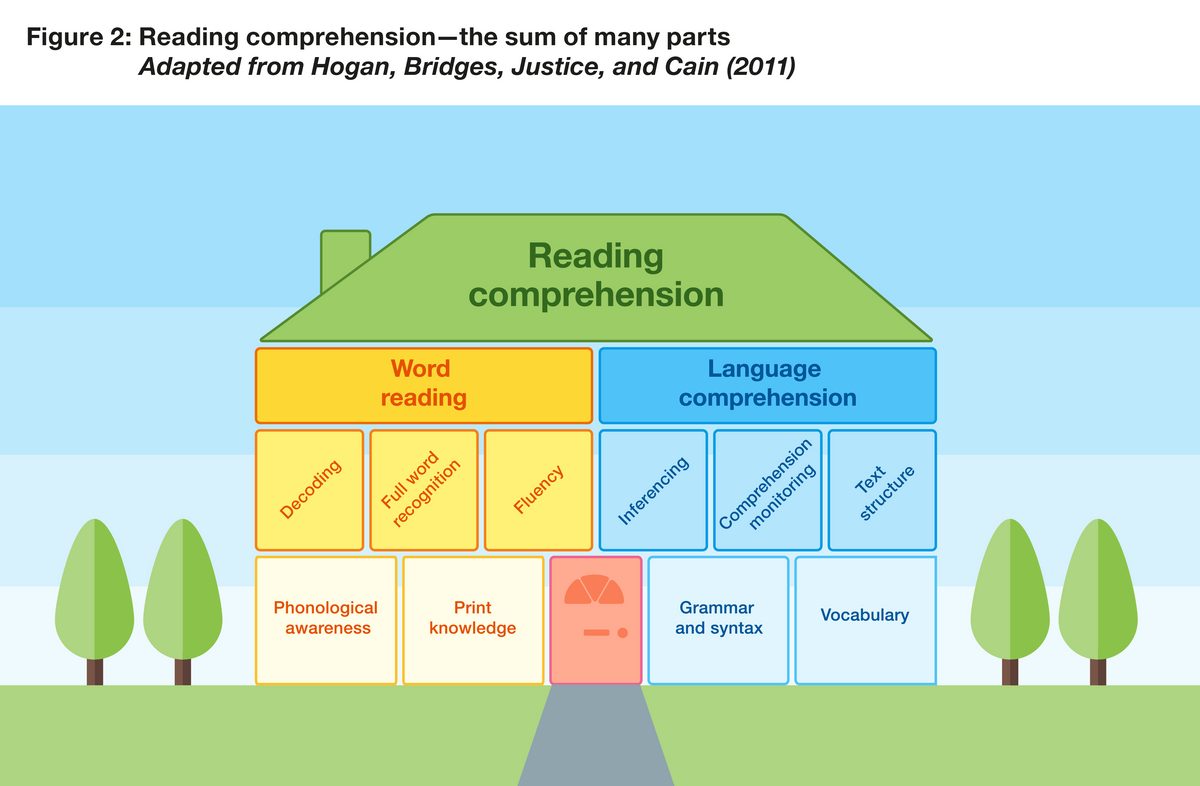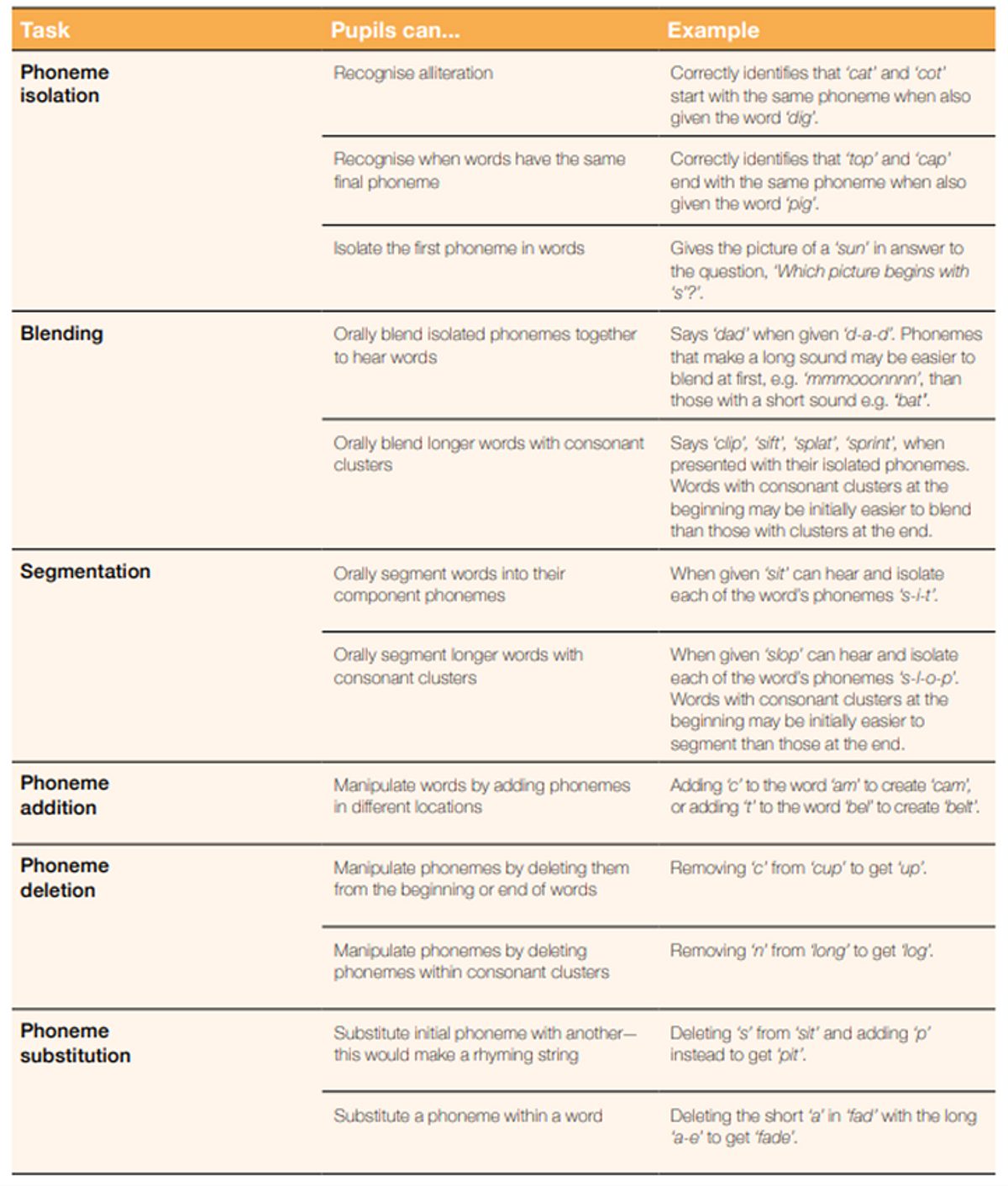Every day in our classrooms, rich experiences support children to learn to read. These span everything from developing new vocabulary in a science lesson, to increasing phonological awareness whilst singing in Early Years.
Early Years children can develop phonological awareness in surprising and creative contexts. Picture the scene: I am watching two children tap away at tambourines. No chatter – just intensive listening. Two taps from one, two taps back! I joined in, of course, and followed along.
Before long, the children used their names and tapped out syllables. Then came the story we had been reading – ‘We’re going on a bear hunt’ – beating the drum to the brilliant bear hunt tale. Amidst those rhythms and singing, phonological awareness was increasing and reading readiness boosted.
How and why does this support children’s ability to read?
The complexity of the teaching of reading can feel overwhelming. However, useful models such as the ‘Reading Comprehension House’ can help us better understand why. Adapted from Hogan, Bridges, Justice and Cain’s 2011 publication, the reading house creates clarity to support our understanding of the different aspects we need to consider in our teaching.

The reading comprehension house is grounded in Gough and Tunmer’s Simple View of Reading. It shows word reading and language comprehension as the two dimensions of reading that need to come together to enable reading comprehension.
If we take a closer look at the left-hand side of the house, the rooms that form the foundations of word reading, we can consider the importance of ‘phonological awareness’ and ‘print knowledge’ in particular. In the EEF’s Improving Literacy in Key Stage 1 guidance report, the link between phonological skills and the development of word reading is highlighted.
‘Phonological awareness’ is the ability to reflect upon and consciously manipulate the sound structures of language at each level — word, syllable, and phoneme. This means phonological awareness is an umbrella term for a broad set of skills that can vary in difficulty. For example, you may explore word reading via rhyming patterns (‘Do these two words rhyme?’ or ‘What else rhymes with…?’).
Phonemic awareness is one aspect of phonological awareness and refers to the skill of manipulating the smallest unit — phonemes. For example, isolating the initial sound ‘d’ in ‘dig’. Training phoneme awareness can improve word reading 2 and it proves an important part of structured phonics programmes.
This table –showing phoneme awareness tasks ordered by difficulty – from the Improving Literacy in Key Stage 1 guidance report, may help teachers better understand a child’s phonemic awareness and plan their next steps for teaching:

The power of print knowledge
Let’s return to the ‘Reading Comprehension House’. The room next door to phonological awareness print knowledge. Print referencing refers to techniques educators use to increase children’s knowledge about, and interest in print, by highlighting the forms, functions and features of print whilst reading aloud.
Children typically understand early developing concepts, such as print conventions and functions of print, before learning to recognise letters and words.
What techniques and questions might we use to support the development of print knowledge?
Questioning
‘How many words are on this page?’
‘There are words in the wolf’s speech bubble; what do you think they say?’
Requests
‘Show me where I should start reading on this page.’
‘Point to a letter that’s in your name’
Comments
‘Look, the illustrator wrote the word bus on the yellow school bus.’
‘These words are exactly the same.’
Non-verbal techniques
Track print from left to right when reading.
Point to print.
Starting with story time
Of course, daily story time provides a wealth of discussion to develop language and word reading skill. We can enjoy rhyme and alliteration to build phonological awareness. Additionally, we can provide vital opportunities to develop print knowledge. In doing so, we are supporting the strong foundations upon which to build word reading.
Look out for our next blog on the ‘Reading Comprehension House’ which explores the importance of the ‘decoding’ room.
